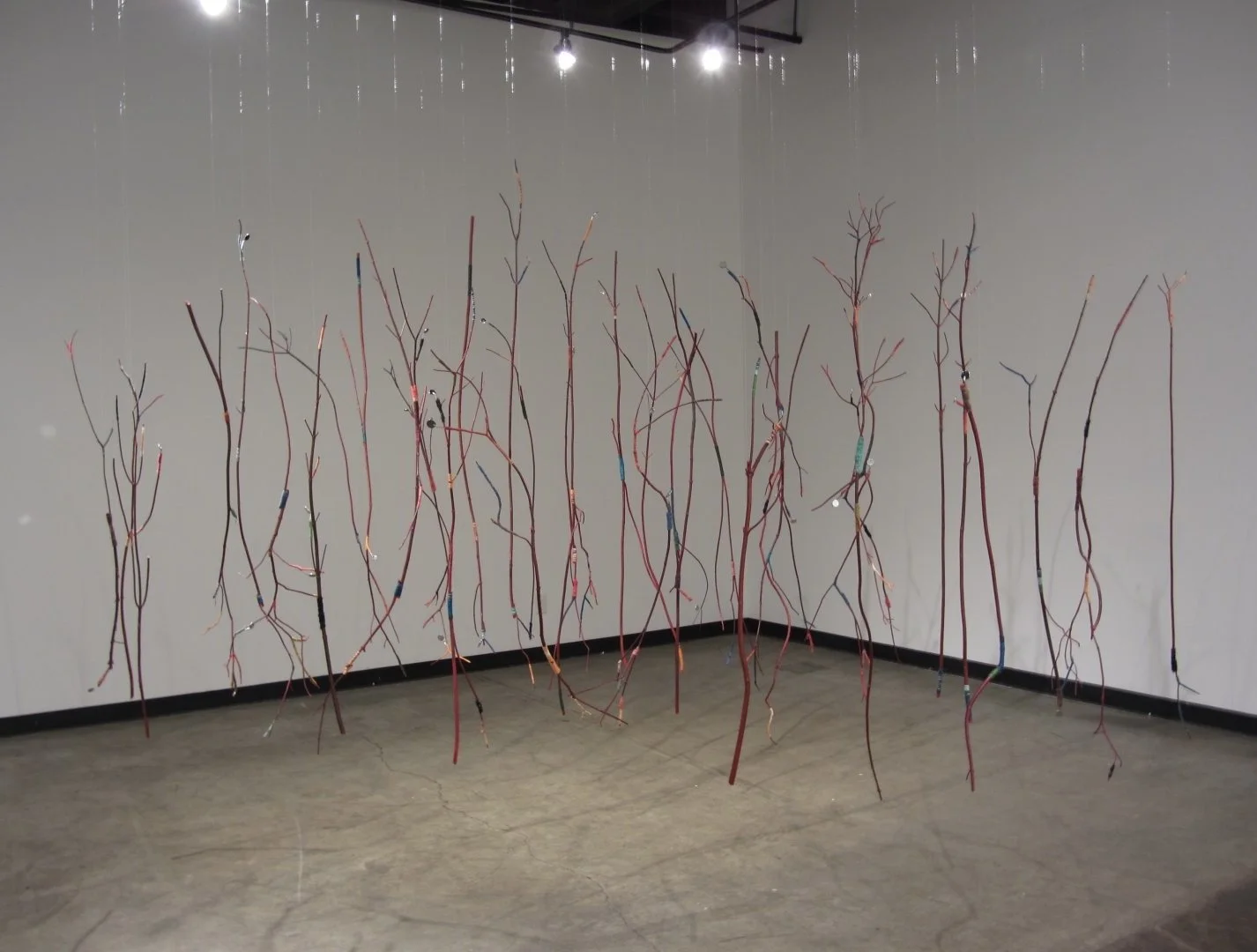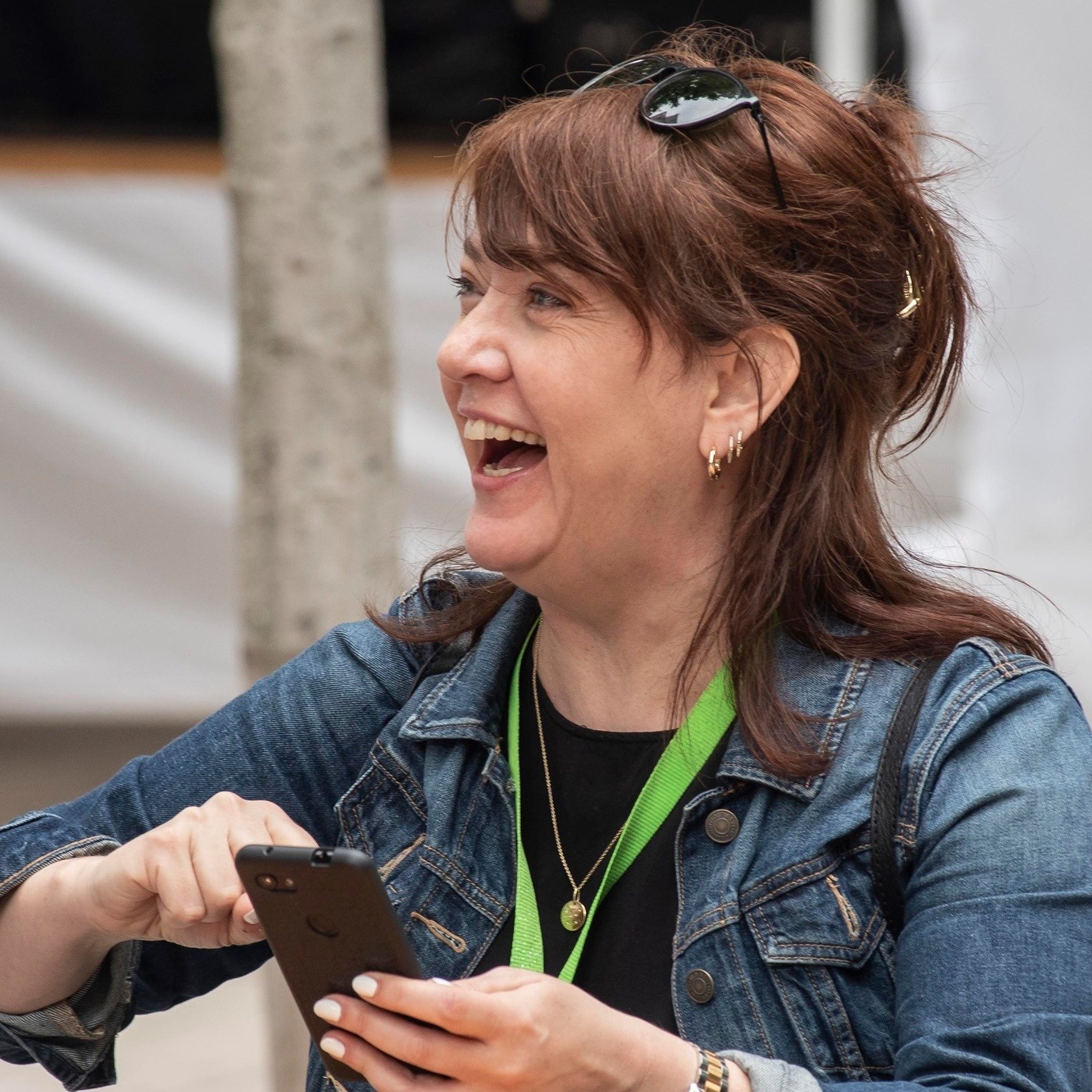Interior Infinite cues a carnival of fluid identity at the Polygon Gallery
From Nick Cave to Dana Claxton, artists explore the idea of the masquerade as a way to challenge societal norms
Nick Cave’s Blot, 2012, HD video, sound. Courtesy of the artist and Jack Shainman Gallery, New York.
Martine Gutierrez’s Demons, Yemaya 'Goddess of the Living Ocean,' p94 from Indigenous Woman, 2018. Courtesy of the artist and Ryan Lee Gallery, New York.
The Polygon Gallery presents Interior Infinite from June 25 to September 5. See COVID safety measures here.
ONE OF THE PRIZE pieces in the Polygon Gallery’s fantastical, gender-bending new Interior Infinite show is Soundsuit by Nick Cave—not the black-clad Aussie singer but the Black American artist.
Adorned with hundreds of carefully sewn-on buttons, the costume’s headpiece juts out like a giant hairy speaker or a surreal eye. Blending the shamanic and the homemade, Soundsuit obscures the wearer’s gender, class, and race—a majestic mix of armour and disguise, sculpture and fashion design.
For curator Justin Ramsey, it was the leaping-off point for the show’s play on disguise and identity, at a crucial precipice of societal change.
“It’s this totally surreal moment where everything has been suspended; old orders don’t matter anymore,” he tells Stir in a media tour of Interior Infinite at the gallery. “We’re constantly remaking all of these social orders, and in that way it is carnivalesque, if you think about a carnival as this opportunity where everybody puts on a costume, put on a mask: there’s a fruitful moment there in imagining a society that's more equitable, that’s more sustainable—that's all the things that we need it to be.”
In the depths of pandemic lockdown, the mixed-race Ramsey says he was despondent over the killing of George Floyd last year. And that’s when his mind went to Cave.
Cave was similarly depressed in the aftermath of the Rodney King beating in 1992, when his first Soundsuit, made of twigs, was born as a “demonstration” against the act of racist violence. The Missouri-born visionary, who trained with Alvin Ailey and studied art and fashion, would go on to create hundreds more—each imagined as a kind of camouflage and protection for the wearer. Drawing on his dance background, many of the costumes could be worn by performers, the fabric creating exquisite sounds and movement patterns. Polygon visitors can experience this in his mesmerizing Blot—a video of an all-black-raffia costume rustling into endless Rorschach-like shapes.
The show brings together an impressive array of international and local artists, some, like Cave, well-known, others new discoveries by Ramsey. Interior Infinite spans photography, video, performance, and sculpture, the majority of the works playing with self-portraiture and the idea of masquerade revealing, rather than concealing, identities.
Ramsey borrowed the title Interior Infinite from Mikhail Bakhtin’s Rabelais and His World, which explored the potential of carnival-like rituals to overcome societal strictures and conformity. “The interior infinite could not have been found in a closed and finished world,” Bakhtin wrote in the book.
Inspired by that quote and Cave’s spectacular creations, Ramsey embraced the idea of an exhibit that would explore the fluidity of identity—racial, gender, and otherwise—through costume, masks, drag, and even avatars.
“We often think about identity in simplified, essentialist terms,” Ramsey says. “But who we are is constantly changing according to who we are with, or what we’re doing at the time. It was exciting to think about a show that was about identity, but not in any didactic way.
“I think of normativity as this lid that will close down on things that will constantly overflow against it.”
Meryl McMaster, Dream Catcher, 2015. Courtesy of the artist; Stephen Bulger Gallery, Toronto; and Pierre-François Ouellette art contemporain, Montréal.
The identity politics may be complex in Interior Infinite, but they play out in a riot of colour and self-expression.
The oldest works in the exhibition are Claude Cahun’s trailblazing self-portraits from the early 1900s. Born Lucy Renee Mathilde, the artist created black-and-white images that play with gender fluidity, picturing the androgynous subject as a man or a woman. In one, Cahun sits with hair shorn; in another, the artist wears a sinister carnival mask. (In a quote that seems to suit the exhibit, Cahun once wrote, “Under this mask, another mask; I will never finish removing all these faces.”)
Amid the better-known names is Hunkpapa Lakota artist Dana Claxton. Her well-known Headdress (Dana), an LED Firebox with transmounted chromogenic print, is a self-portrait that both obscures and celebrates her identity as a cultural carrier by covering her in inter-tribal beadwork pieces. Also on view is a new Claxton work called Hand Tooled (4 Ellen). In this self-portrait, all you can see of the artist is her two legs beneath a mass of Indigenous etched-leather bags and purses—the kind ubiquitous as souvenirs and appropriated by fashion for decades.
Dana Claxton’s Hand Tooled (For Ellen), 2020-2021, C-print. Courtesy of the artist
These juxtapose perfectly with the stunning photographic self-portraits by Meryl McMaster, an artist of Plains Cree and Euro-Canadian heritage. She pictures herself alone in wintry landscapes, wearing elaborate costumes that explore Indigenous identity, representation, and myth. In a similar vein, Martine Gutierrez is a discovery Ramsey is excited to share. The trans Latinx American phenom, showcased at the Venice Biennale, appears in enlarged shots from her Indigenous Woman glossy magazine project. In her series, she uses makeup, props, and costumes to challenge notions of gender and cultural markers; in the pieces here, she integrates traditional Mayan textiles, braids, and jewellery with tropes of fashion—such as long faux nails.
Literal Mardi Gras balls and parades are touchstones in the work of celebrated American photo artist Carrie Mae Weems, whose black-and-white Missing Link photographs are from her Louisiana Project. They play on New Orleans’ all-white Rex Ball, picturing people in tuxes and tophats, their racial and class identities obscured by elaborate animal masks.
Carrie Mae Weems’s Missing Link, Happiness, 2003, Iris print on paper. Collection of the Newcomb Art Museum of Tulane University; gift of the artist.
Set aside extra time for Interior Infinite’s video works, which take the themes of disguise and identity even further. The entry to the exhibit features Yinka Shonibare CBE’s Un Ballo In Maschera, an elaborate moving painting based on the 19th-century opera of the same name, featuring performers in ball gowns, frock coats, and Venetian masks. Elsewhere, Ursula Mayer’s Eternal Vomit Ground of Reality brings to life an eerie, ash-stained avatar; floating above you onscreen, like a video-game character “idling”, the figure posits a posthuman world. Elsewhere, Zadie’s Xa’s 55-minute Child of Magohalmi and the Echoes of Creation is a complex and compelling mix of Korean creation myth and matrilineal knowledge systems with an environmental plea. It interweaves images of West Coast orcas with the cosmos, the artist appearing masked.
Ramsey has also managed to bring in emerging artists alongside the better known names. Make sure to see Vancouver-based Lacie Burning’s moving seeing in the dark, in which the Kanien'kehá:ka (Mohawk) multidisciplinary artist imagines themself in the form of a nonbinary Indigenous child, curled into a fetal-like position, and crafted out of faceted mirror. The figure reflects leaf and forest motifs from projected video—a moving evocation of the effects of the climate crisis on future generations.
These are just a few of the works that challenge gendered and racial norms—and show the infinite possibilities as the world recalibrates after the pandemic storm.
As Ramsey, like the artwork he’s gathered here, challenges: “Especially in this pandemic, there’s talk about how it’s time to get back to normal. But who decides what normal is? And who does normal serve?”


















